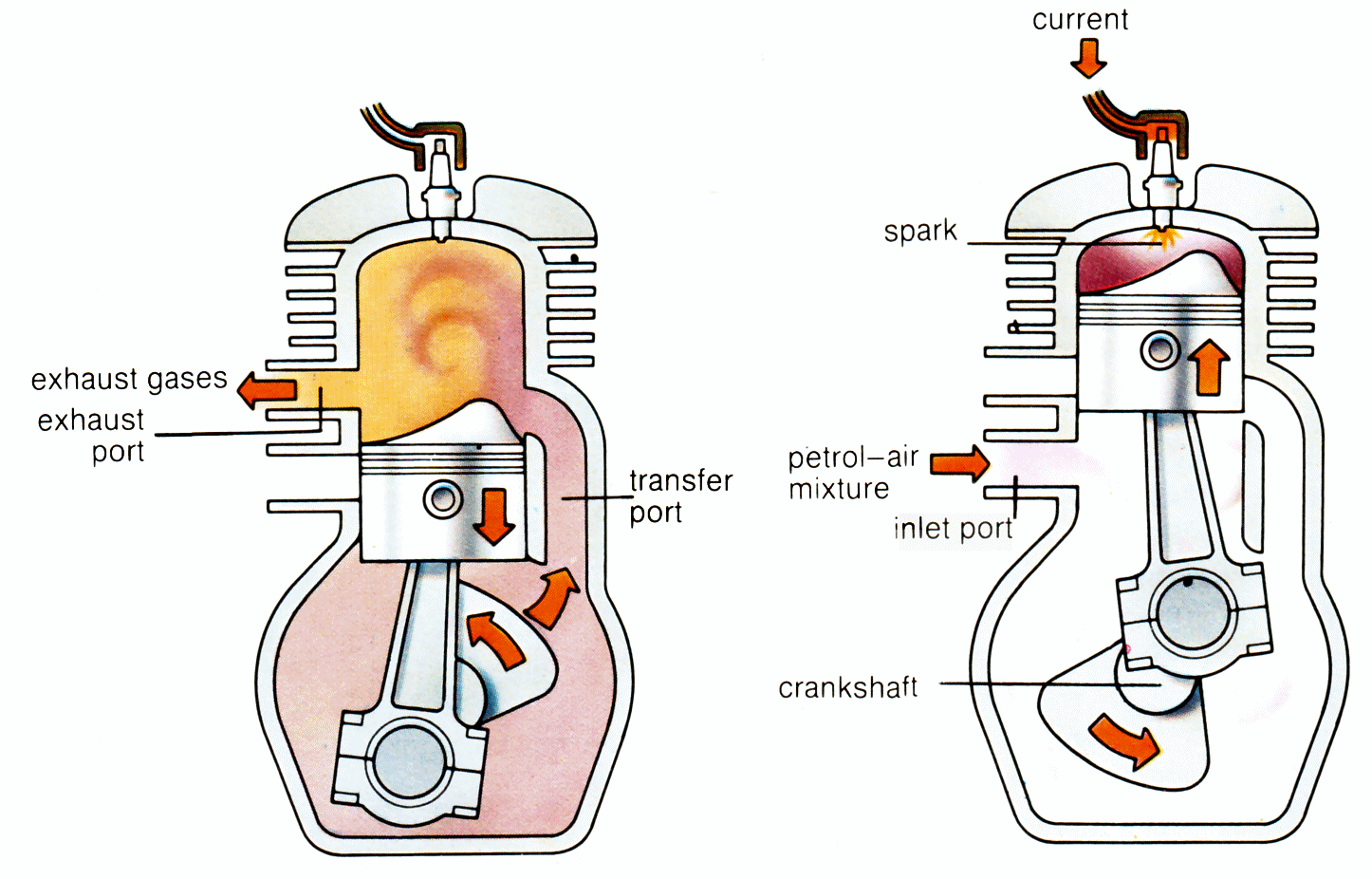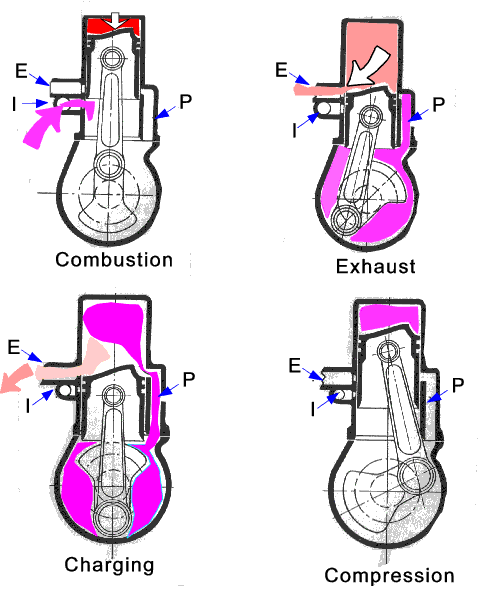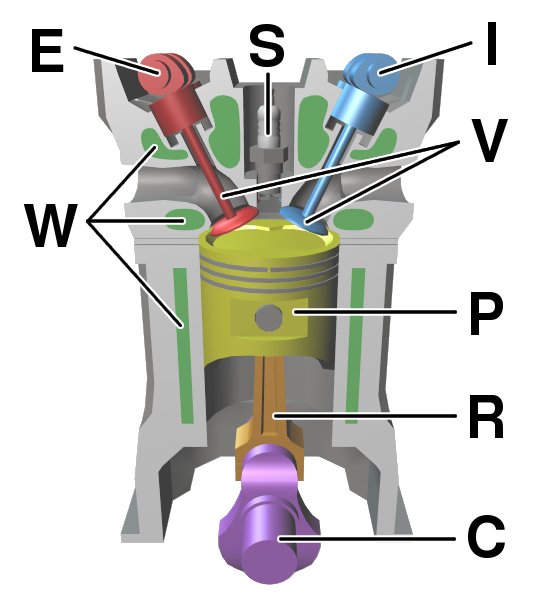Difference Between Two and Four Strokes

There are a lot of differences between the two stroke and four stroke engines, regarding the construction, effectiveness and efficiency.
The basic difference is that a two stroke engine completes its whole cycle in one revolution of the engine crank shaft, which is connected to the piston via the connecting rod, whereas, the four stroke engine requires two crankshaft revolutions to complete its four processes in a cycle. In theory therefore, the two stroke engine has a greater power output for the same revolution time.
A two stroke engine has complex intake and exhaust methods, and pretty much result in the mixing of exhaust gases with the air to be used in the combustion process. The exhaust and intake processes in the four stroke engine, on the other hand, are well defined and there is no chance of mixing taking place. The piston and the small end also remain comparatively cooler in this version.
In the two stroke engine, there also occur the phenomena of carbon deposit accumulation and expulsion of fresh combustible charge through the exhaust port.
Lesser vibrations are experienced in a two stroke engine because there is a power stroke per revolution of crankshaft, unlike the four stroke engine.
A four stroke engine has a large number of accessories and thus requires higher maintenance time in comparison to a two stroke engine. The accessories in the two stroke engine however need more maintenance due to the higher localized temperatures and carbon deposits. The fewer accessories in a two stroke engine mean that they are cheaper than the four stroke one. Two stroke engines don’t have valves and are thus lighter.
Read More: How To Unfreeze a Car Engine
Instructions
-
1
Two stroke engine
In this engine, the exhaust and intake take place simultaneously with the power stroke.
Suggested: How to Test Car Engine Pistons
Image courtesy: roymech.co.uk
-
2
Four stroke engine
There are four operations in a complete power cycle of a four stroke engine.
- Intake stroke: In this stroke the air required for combustion is directed inside the piston with the help of an intake valve. The piston travels down in this operation
- Compressions stroke: The inlet valve closes and the piston starts to move up. When the compression ratio is appropriate, fuel is injected and the spark plug produces a spark that induces combustion.
- Combustion stroke: The force of combustion forces the piston down and it helps turn the crankshaft.
- Exhaust stroke: The piston moves up again and clears the space above it of any exhaust gases.
You May Like: How To Degrease an Engine
Image courtesy: uncyclopedia.wikia.com



